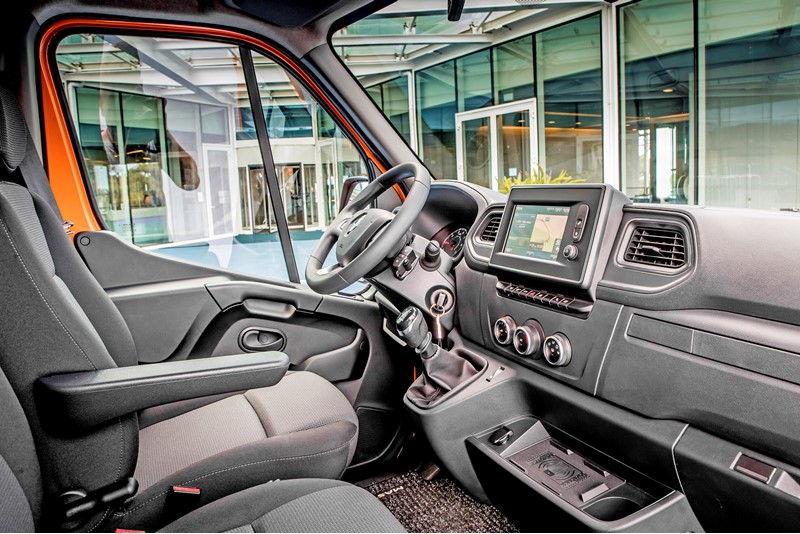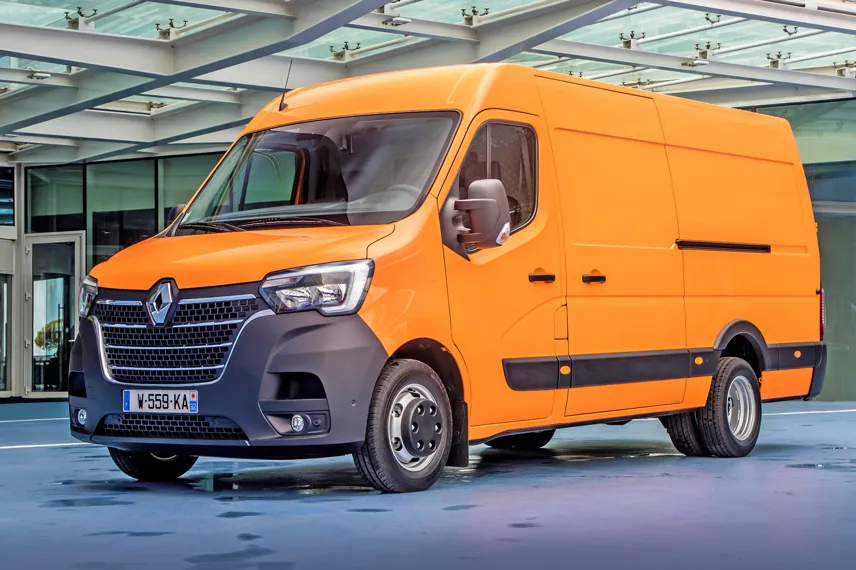Review
At almost 10 years old, the Renault Master has undergone its first major overhaul, ushering in a new look, new interior and new technology.
The Master is among the best in the business when it comes to running costs vs payload and this new version promises to build on that functionality with lower emissions and better efficiency.
An imposing new front end is the most noticeable change externally. The new nose allows for greater airflow into the engine bay (a requirement for meeting the latest emissions standards) and – according to Renault bosses – was designed to give the Master a more truck-like appearance.
Under the raised bonnet sits a re-worked version of the 2.3-litre dCi diesel engine. It comes in a variety of configurations, with all models meeting Euro 6d-Temp or Euro VI-d emissions standards.
Power and torque have been increased across the line-up, to a maximum of 180PS and 400Nm, resulting in a more responsive drive.
At the same time, the new engines reduce fuel consumption by up to 3mpg.
Six-speed manual or semi-automatic trans-missions remain available, with front- and rear-wheel drive.
The fully electric Master ZE also stays, offering a real-world range of 75 miles.

The Master’s interior is all-new. Its dashboard was designed to maximise cabin storage, while providing a more premium feel.
It retains the simplistic layout and hardwearing feel of the previous Master, but introduces a better infotainment system, neater switchgear and chrome detailing.
There is also a digital rear-view mirror that makes use of a rear mounted camera, so drivers have a better view of their surroundings from inside the cab.
Dash-top storage bins, large door pockets and under-seat space provide up to 105 litres of stowage space in the cabin. There is also a dash-mounted docking station for holding smartphones or tablets.
The seats are comfortable and provide adequate adjustment, although we found the lower dash to encroach on the legroom for a middle-seat passenger.
Behind the wheel, the Master provides good visibility and is easy to manoeuvre. Light controls mean the driving experience is relaxed and the subdued engine note helps reduce fatigue.
At motorway speeds, the van is refined and offers a range of driver assistance such as cruise control, lane departure warning and blind spot monitoring.
The diesel engine produces adequate shove. All our test vehicles were packed with a 640kg load in the back and the engine never felt lacking.
We were impressed by the low down torque, which enables the Master to operate at almost crawling speeds in fourth gear.
The range spreads across 99 variants, with the panel van available in four height options and three lengths. There is also a range of approved conversions, plus a minibus and crew cab models.
Load volumes range from eight to 22 cubic metres with gvw ranging from 2.8 to 4.5 tonnes.
Payloads are also competitive with most versions offering at least 1,000kg.
















